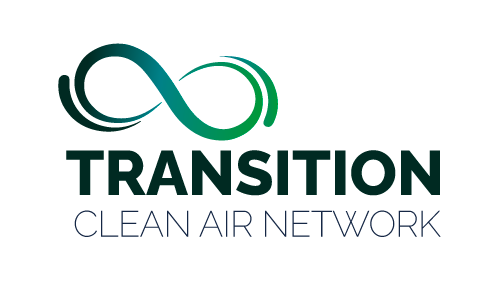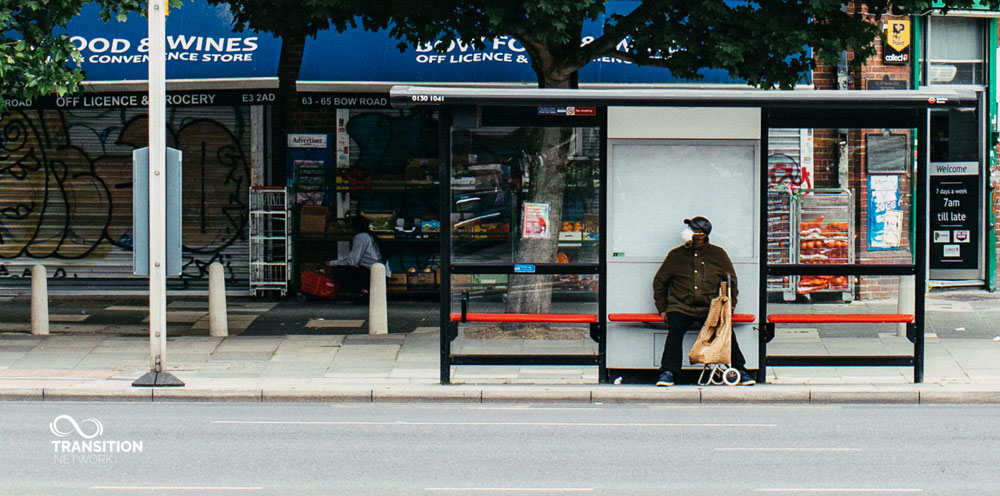DOWNLOAD
Introduction
The TRANSITION Clean Air Network Launch Summit was held online on 24th November 2020. The objective of the workshop was to identify new emerging indoor and outdoor air quality challenges and risks associated with transport decarbonisation over the next decade. This report provides recommendations for priority research areas linked to these challenges and risks.
Over 60 invitees attended the launch on behalf of more than 45 organisations, comprising: 5 local authorities; 3 national Government agencies or public bodies; 2 public companies; 18 private companies; 4 not-for-profit and charitable organisations; and 13 UK universities (including nine represented by TRANSITION Investigators). The event was structured in three sections: (1) Policy Context; (2) Stakeholder Perspectives and (3) Cross-Cutting Synthesis. Summaries of the presentations given can be found in respective Annexes of this report and presentation slides are available on our website. We highlight below the key recommendations informed by our invited speakers and subsequent breakout group discussions (focussing upon three questions; see box below). We are most grateful to all who participated in the launch, to the speakers for their personal contributions, and to the group facilitators and rapporteurs.
This was the first TRANSITION Clean Air Network summit and, as such, sought blue-sky thinking in relation to the air quality challenges and risks linked to the UK low-emission mobility revolution. Stakeholder perspectives and breakout group discussions were structured by transport environment to encourage focussed and detailed insights to emerge among those with relevant and related expertise. In future network activities, however, we will ‘constructively disrupt’ these silos, bringing people together with complementary but contrasting insights, as we seek holistic solutions recognising the complexity and interplay of transport choices, technology and policy, reflected in the cross-cutting network themes (see Annex 3).

Recommendations
General
- Responding to the challenges and risks for air quality across the indoor and outdoor transport interface requires complementary and contrasting expertise, experience and perspectives from academics and commercial/public/not-for-profit stakeholders.
- No single approach will be sufficient to address the air quality challenges and risks: we need a combination of coordinated technological innovation, behaviour change and policy making, alert to the impacts that each component has on the others.
- We need a joined-up approach which delivers sustainable, context-relevant connectivity (i.e., urban, suburban and rural) since provisions for each transport mode affect citizen access to, and the suitability of, transport choices and equity.
- Ensure UK’s air quality legislative framework reflects the highest health standards, e.g., adoption of the World Health Organisation’s (WHO) fine Particulate Matter (PM5) exposure limits, and binding targets for emerging air pollutants recognised tobe harmful for human health.
- We will leverage research capacity provided by the UKRI Clean Air Programme activities, including the Wave 2 Clean Air Networks: BioAirNet, CleanAir4V, Breathing City, TAPAS and HEICCAM.
Road Transport
- We should act to mitigate the health impacts of non-exhaust emissions, especially PM from tyre wear (see, e.g., Air Quality Expert Group – AQEG, 2019), for instance through new guidance and regulation.
- We should clarify which metric(s) for each established pollutant (e.g., mass, number or surface-area concentration) best capture(s) (i) its emissions and (ii) its health impacts, and robustly measure them.
- It is essential we monitor, and research the health impacts of, emissions of currently unregulated and/or novel, emerging pollutants (e.g. volatile organic compounds in exhaust) to determine what further pollutants we need to regulate, at what levels.
Public Transport
- Modal shift towards public transport and active travel is essential to clean, sustainable mobility. Local authorities need national Government support to stimulate modal shift.
- We need to incentivise both the use of public transport (e.g. by reducing congestion, and thereby journey times) and provisions of clean public transport (e.g. by removing the cost burden of substation improvements from electric public transport operators).
- New research is needed to inform people of the consequences of their travel choices for: their personal exposure to air pollution (indoors, outdoors and in vehicles of different types); and their personal contribution to air pollution and its impact upon others.
Active Travel
- Modal shift and achievement of carbon-zero targets requires increased active travel, as well as increased use of public transport: think of ‘first and last miles’ and the opportunities to reduce the 70% of journeys of between 1 and 5 miles that are made by car or van (Department for Transport – DfT, 2019a).
- Increasing active travel, in part, means reducing use of privately owned vehicles, relieving congestion: reduced vehicles and vehicle movements yields more space, and more attractive spaces, in which to walk and cycle more safely.
- The vocal public minority must not drown out the silent majority: 86% of people agreed that the Government should take action in local neighbourhoods to improve air quality, with 78% of people supporting local reductions in road traffic (Report to DfT by Kantar, 2020).
Built and Indoor Environments
- Highways authorities need to update their design standards, e.g. by adopting the standards set out in the DfT’s (2007) Manual for Streets (and recent LTN 1/20 guidance on ‘Cycle Infrastructure Design’; DfT, 2020a) and, perhaps more importantly, incoming 2021 updates from DfT and the Chartered Institution of Highways and Transportation.
- An overhaul of the current Transport Analysis Guidance (TAG) appraisal approach is needed to: incorporate new metrics of the qualities/outcomes we seek in order to change travel patterns, such as the proximity, accessibility and connectivity of public transport hubs via designated active travel provisions; and integrate their evaluation with the current appraisal of transport safety, efficiency and reliability.
- We need to: intensify new/re-developments, providing for businesses, recreation and education within a 20 min walk of people’s homes (in urban contexts); and ensure connectivity within, and between, these 20 min neighbourhoods via active travel and public transport.
Download
The full report with annex is available for download in pdf.
DOWNLOAD
Citing this Report
This report was prepared by Dr James Levine and Dr Suzanne Bartington (Innovation Network Manager and Lead of the TRANSITION Clean Air Network respectively), University of Birmingham, with contributions from the invited speakers named herein and valuable feedback from TRANSITION Co-Investigators. Please cite this report as follows:
Levine, J. G., and S. E. Bartington (2020) TRANSITION Clean Air Network Launch Report, published online 18th December 2020 on behalf of the TRANSITION Clean Air Network. Available at: www.transition-air.org.uk.

